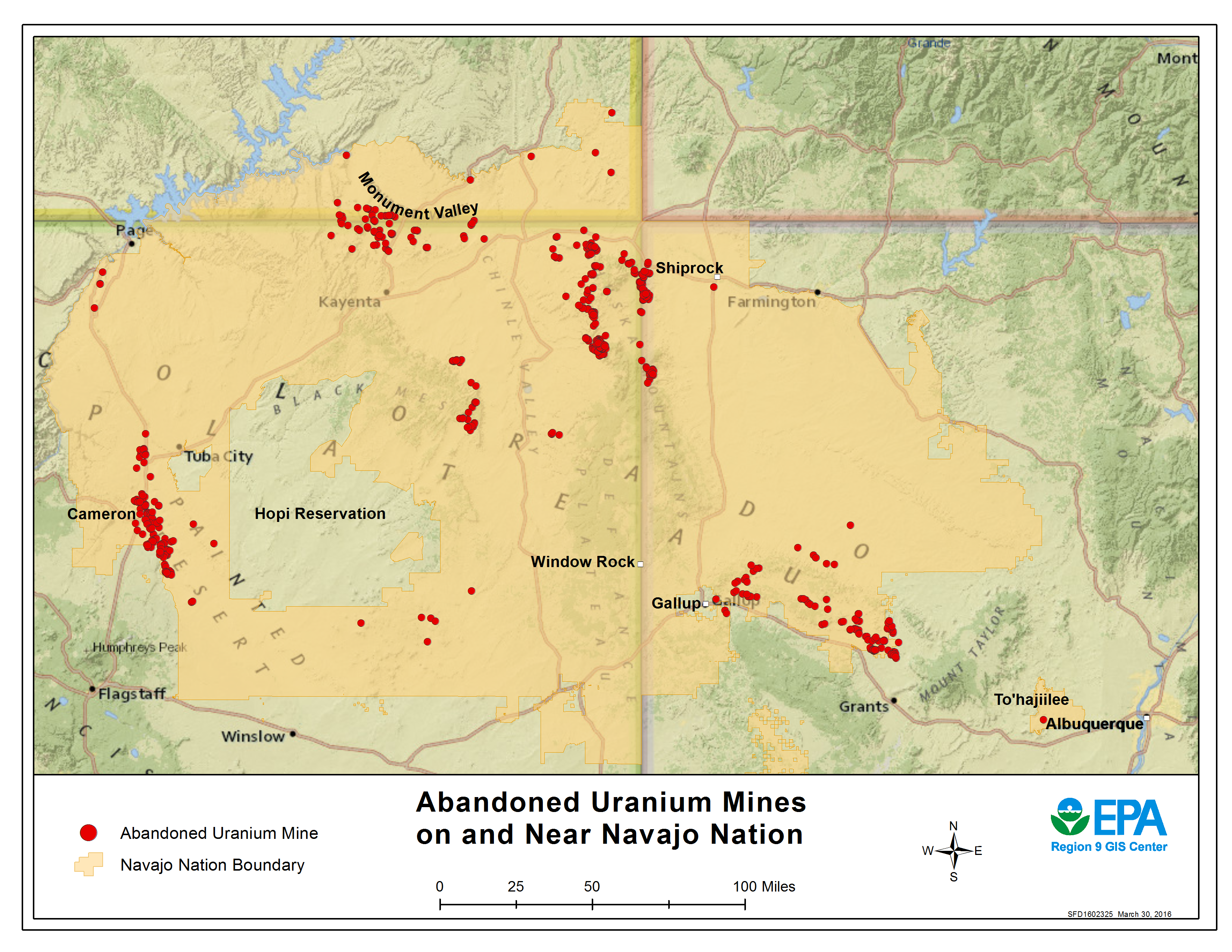A systemic injustice example that has plagued the United States since its creation is the treatment of Native Americans. They have faced extreme discrimination and suffering starting with colonization and continuing today as the United States is a nation built off of their stolen land. The specific injustice case that I will be focusing on, as I learn about it in many of my environmental classes, is the natural resource extraction that occurs on land primarily inhabited by Native Americans. In the mid to late 20th century millions of tons of uranium were being extracted on Navajo lands without regard to the people living in the area’s health and safety. Navajo people were often paid very little to work in these mines as well, and even though the health implications of working in and living near uranium mines were well known by the government and corporations at the time, the Native American people being affected were not informed. Today these people are still experiencing high rates of cancer, impaired kidney and lung function, and other issues related to the uranium exposure from living and working near the mines and from the nearly 500 abandoned mines that exist on their land now.

This is a systemic injustice because it targets a specific marginalized group and the government has had many opportunities to help these communities but they have not taken effective action. There are clear steps that can be taken to attempt to fix this issue such as reparations for the years of medical issues and deaths that have occurred in these areas as well as the proper closing and cleaning of the abandoned mines. The fact that the way to begin to repair this injustice is so clear but not being done makes it very obvious how much the government cares about indigenous populations.
This systemic injustice reminds me of Spivak’s theory of the subaltern. Spivak says that “the subaltern cannot speak,” meaning that marginalized groups’ voices are often not heard. Since the colonial period, Native Americans voices have been disregarded and silenced and they lack a say in what goes on on their land. In the example of uranium extraction on Navajo land the government and mining corporations have been ignoring the Navajo Tribe’s cries for help and have been disregarding any protests over land use.
https://msmagazine.com/2020/12/14/systemic-injustice-nuclear-threat-disarmament-weapons-war/
https://scholarblogs.emory.edu/postcolonialstudies/2014/06/19/spivak-gayatri-chakravorty/